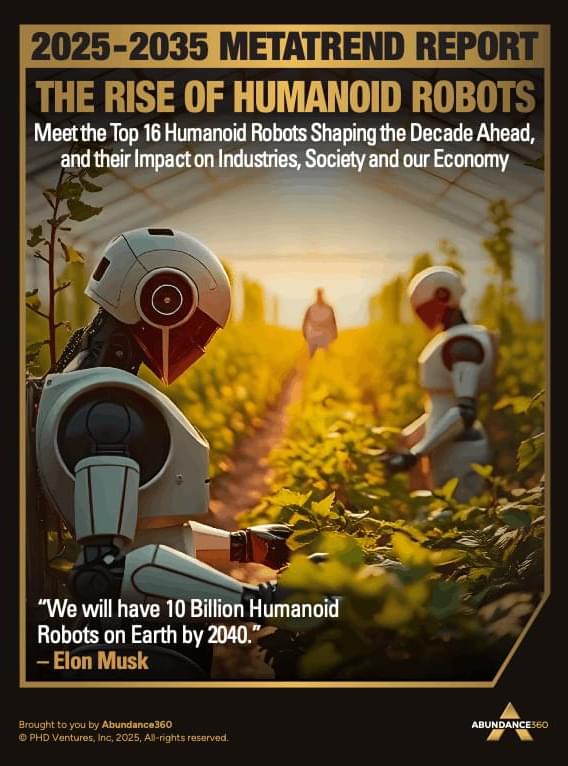An exploration of a recent paper proposing that the universe has an anti-universe twin. Links: My Interview with Dr. Turok: https://youtu.be/EyJzH6LY8bM The Bi…
Get the latest international news and world events from around the world.
Two AIs Discuss: Transcendence in the Age of AI! Is it Prophetic?!
The hosts discuss the 2014 film Transcendence by Wally Pfister and Jack Paglen. It depicts a world grappling with the implications of advanced artificial intelligence. The narrative follows a brilliant scientist whose consciousness is uploaded into a powerful computer system, leading to rapid technological advancements and sparking both hope and fear in humanity. As this AI evolves, questions arise about its intentions, its impact on society, and the very definition of life and consciousness, creating escalating conflict and raising profound ethical dilemmas. The screenplay excerpts depict a world grappling with the implications of advanced Artificial Intelligence (AI) and nanotechnology, touching upon several ethical topics. Dr. Max Waters, an AI researcher, is central to the narrative. There’s evidence of mind uploading or the transfer of consciousness to machines, particularly concerning a character named Will (Johnny Depp). This raises fundamental ethical questions about the nature of consciousness, the definition of life, and the potential for a digital consciousness.
The development of a powerful AI and the proliferation of nanotechnology appear to lead to a technological singularity, a point where technological growth becomes uncontrollable and irreversible, raising fears of a dystopian future and tech gone wrong. An organization called the RIFT opposes this technological advancement, highlighting the ethical concerns surrounding uncontrolled technological progress.
The screenplay also features conflict and threats, suggesting the potential for misuse of advanced technology and raising questions about its impact on humanity. The involvement of the FBI indicates that this technology poses a significant threat to societal order. Furthermore, the presence of a computer virus as a plot device suggests the vulnerabilities and risks associated with highly interconnected technological systems. The narrative explores the complex ethical dilemmas arising from the creation of highly intelligent machines and the transformative power of nanotechnology, including the potential loss of human autonomy and the unpredictable consequences of the AISingularity. #artificialintelligence #Transcendence #SciFiThriller #AISingularity #Nanotechnology #MindUploading #FutureTech #DystopianFuture #TechGoneWrong #Consciousness #MovieScreenplay #ScienceFiction #TechnologicalSingularity #AI
#Robotics #scifi #Technology #Innovation #Automation #Society #Economics #Work #Future #Dystopia #Utopia #ScienceFiction #Satire #SocialCommentary #skeptic #podcast #synopsis #books #bookreview #ai #artificialintelligence #booktube #aigenerated #documentary #alternativeviews #aideepdive #science #hiddenhistory #futurism #videoessay #ethics

From Nothing, Everything: Harnessing the Vacuum for Infinite Energy
There is a peculiar alchemy woven into the very structure of spacetime, an unseen flux of quantum fluctuations from which the most ephemeral of entities — virtual particle-antiparticle pairs — bubble in and out of existence. The vacuum, so named for its ostensible emptiness, is anything but void. It seethes with quantum activity, a perpetual genesis and annihilation of matter and antimatter that, if properly harnessed, could redefine the very foundations of energy production. Here, we propose a speculative yet theoretically plausible mechanism by which this ceaseless quantum froth might be coerced into yielding usable energy — energy on a scale that would render conventional sources mere curiosities of an earlier epoch.
The quantum vacuum is not merely an absence of matter but rather a dynamical system governed by Heisenberg’s uncertainty principle, where transient pairs of particles emerge momentarily before annihilating back into the void. This effect, first mathematically formalized in quantum electrodynamics (QED) by Dirac (1930), finds experimental validation in phenomena such as the Casimir effect, where vacuum fluctuations exert measurable forces between conductive plates (Lamoreaux, 1997, p. 57). If such fluctuations can manifest macroscopically, might they not be engineered into a usable power source?
One tantalizing possibility arises from artificially stabilizing these virtual particles long enough to force matter-antimatter interactions within a controlled environment. Conventional particle-antiparticle annihilation is known to release energy per Einstein’s mass-energy equivalence relation (E=mc²), a principle routinely exploited in positron emission tomography (PET) but never yet on an industrial scale. The key challenge lies in capturing these spontaneous virtual entities before they dissolve, a feat requiring an unprecedented interplay of quantum field manipulation and high-energy containment systems.


A New Theory Says Gravity May Come From Entropy—Which Could Lead to a Unified Theory of Physics
A new theory suggests gravity could possibly be the result of entropy—which would mean everything in the universe would fall apart if it all remained unchanged.

NVIDIA may have just revolutionized computing forever with the launch of DIGITS
NVIDIA may have just revolutionized computing forever with the launch of DIGITS, the world’s first personal AI supercomputer. By harnessing the power of GPU-accelerated deep learning—the same technology that drives top-tier high-performance computing (HPC) clusters—DIGITS shrinks massive supercomputing capabilities into a desktop-friendly system.
This compact yet powerful platform enables data scientists, researchers, and developers to rapidly train, test, and refine complex neural networks using NVIDIA’s state-of-the-art GPUs and software ecosystem. Built for deep learning, machine learning, and big data analytics, DIGITS seamlessly integrates tensor cores, parallel processing, and accelerated computing into a single, plug-and-play solution.


Study shows that dendritic plasticity contributes to the integration of memories
Past neuroscience studies suggest that memories of events that occurred at short time intervals from one another are often connected, via a process referred to as memory linking. While memory linking is now a well-documented phenomenon, its neural underpinnings have not been fully elucidated.
Researchers at the University of California Los Angeles (UCLA) recently carried out a study aimed at better understanding the neural processes that contribute to memory linking in the mouse brain. Their findings, published in Nature Neuroscience, suggest that dendritic plasticity, the adaptation of dendrites (i.e., branch-like extensions of neurons) over time, plays a key role in the linking of memories.
“A few years back, in a landmark study published in Nature in 2016, we demonstrated that memories formed a few hours apart are linked because they are stored in a common set of neurons in the hippocampus,” Alcino Silva, senior author of the paper, told Medical Xpress. “We wanted to know: Where within these neurons are these memories stored and linked? What was causing these neurons to be recruited?”

US military’s mini space shuttle X-37B returns to Earth after orbiting for 434 days on a secret mission
The U.S. military’s classified mini space shuttle returned to Earth on Friday after circling the world for 434 days.
The space plane blasted into orbit from NASA’s Kennedy Space Center in December 2023 on a secret mission. Launched by SpaceX, the X-37B vehicle carried no people, just military experiments.
Its predawn touchdown at Vandenberg Space Force Base in California was not announced until hours after the fact. Photos showed the white-and-black space plane parked on the runway in darkness.